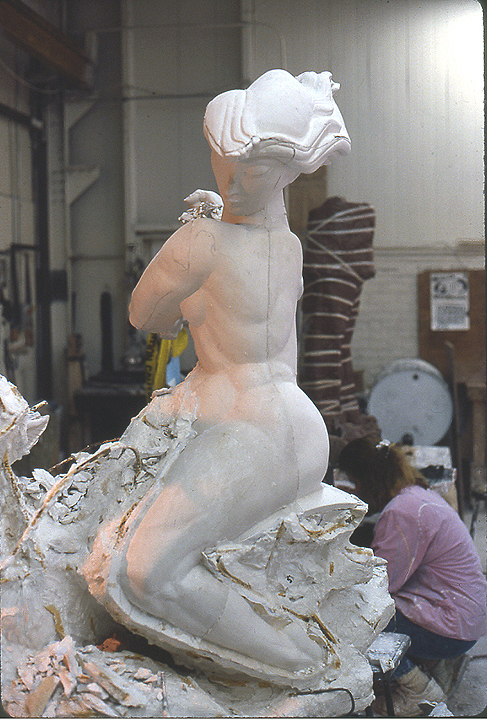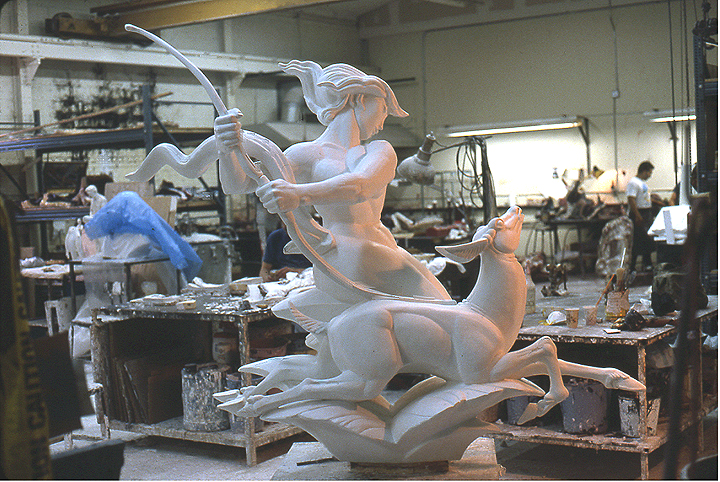

Plaster Casting and Waste Molds

A waste mold is just that, a mold that will be wasted or destroyed after usually only one casting.
It is generally the first mold a young sculptor learns to make. It is quick and inexpensive to make.
The following images and descriptions are of a waste mold made off a sculpture by Albert Wein titled "Diana". This was actually one of my most favorite molds I have had the pleasure of making. I also enjoyed working with Mr. Wein and learning his process.
Mr. Wein and a number of his peers would create a clay sculpture, make a plaster waste mold, refine the mold and make a plaster cast then refine the cast before making a rubber mold for casting in the lost wax process. This process is hardly done today. Most sculptors just have a rubber mold made off their clay.
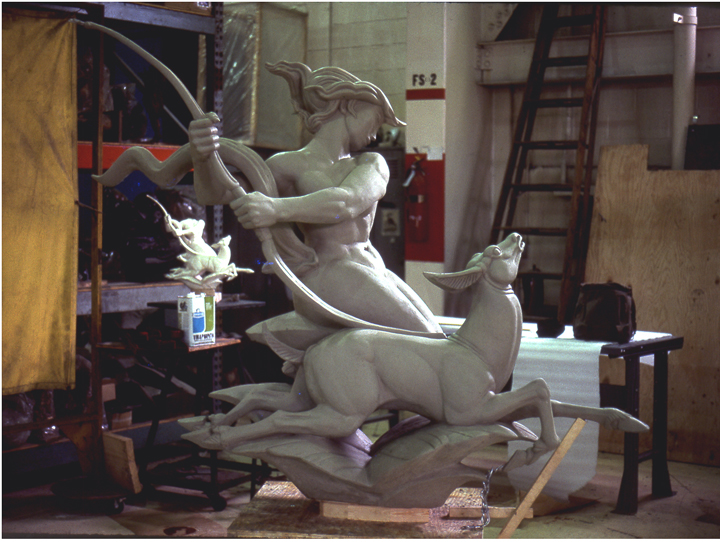
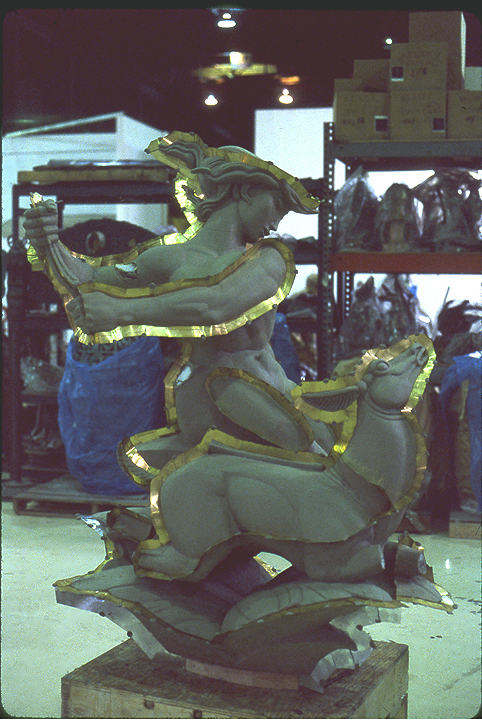
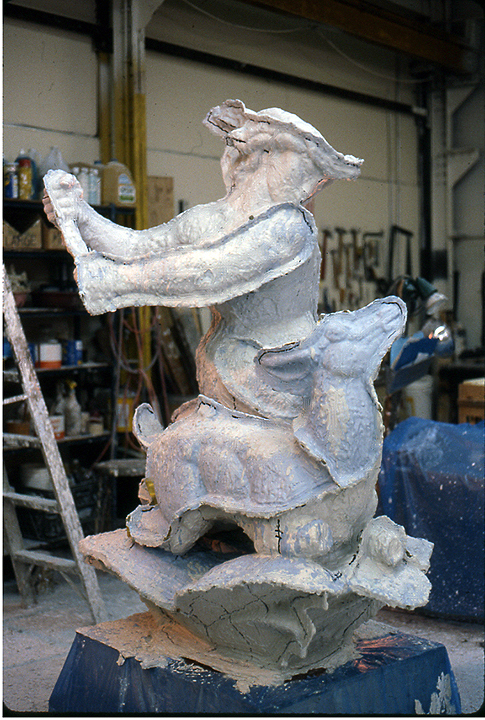
Certain parts of the sculpture are cut off and molded seperately. Metal flashing is used to divide the sculpture into sections that will aid in later removing the clay and armature and give access for casting purposes. Several layers of plaster are applied to the surface of the sculpture, capturing all the detail. The only reinforcing used is steel rebar and wood. Very little burlap is used if any. |
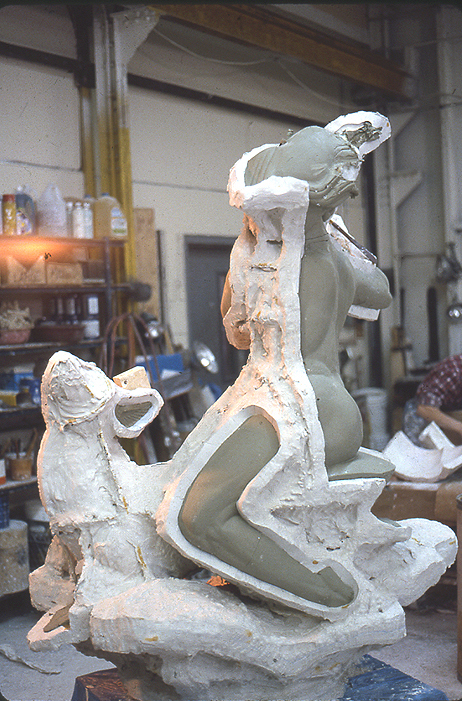
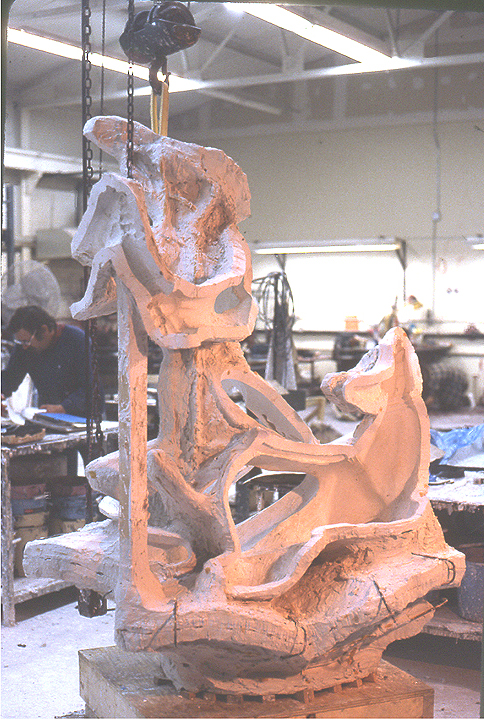
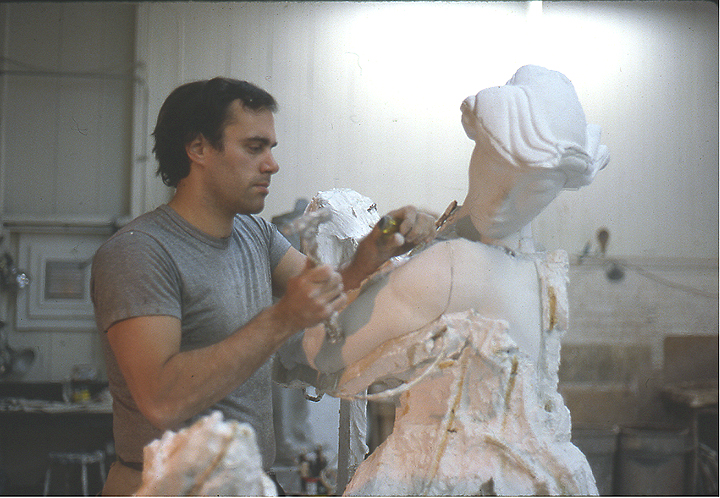
After the plaster mold has been created the mold sections are removed revealing the clay underneath. The clay and any armature must be removed. The mold is then cleaned and any sanding or refining is done in this stage. A separator is then applied to the inside surface of the mold. Plaster is then applied to the surface of the mold and backed with burlap and reinforcing rod to make a strong plaster cast. Once the plaster cast has set inside the mold, the mold is then chipped away revealing the fresh plaster cast below. |
The chipping out of the plaster cast continues until all the mold has been removed from the surface. The seams left from the mold sections are taken off and filled. The parts that were molded separately are reattached. Any additional sanding and finishing is done and the work is completed. |
